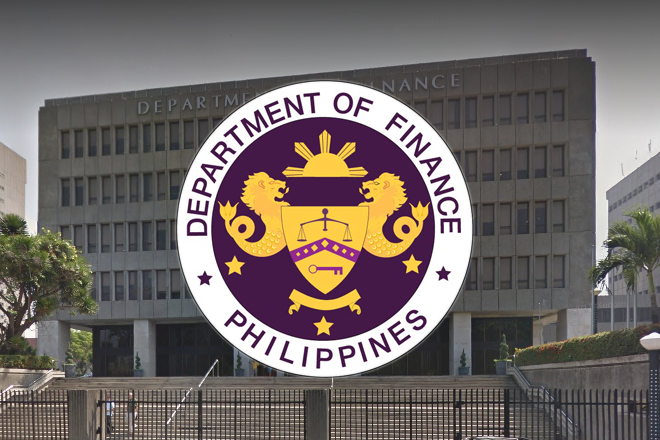Rice tariffication a gamechanger in 2019: DOF
January 10, 2020
Among the reforms for which the Department of Finance (DOF) advocated congressional approval in 2019 was the Rice Tariffication Law (RTL), which imposes farmer protection tariffs on rice imports in lieu of quantitative restrictions.
The approval by the Congress and subsequent implementation of the RTL is considered a proud achievement of the Duterte presidency, which was able to effect what Finance Secretary Carlos Dominguez III described as a “politically difficult” reform, after around 30 years of failed attempts by previous administrations.
Analysts believe the steady drop in the retail cost of rice since the RTL took effect in March has helped the Duterte administration pull down headline inflation, which rose to a nine-year high of 6.7 percent in September 2018.
Inflation has declined to a year-to-date headline rate of 2.5 percent as of November 2019.
Dominguez said President Rodrigo Duterte’s decisive leadership led to the passage of the RTL and broke the “stranglehold of inefficiency” in the domestic rice industry.
Rice tariffication, Dominguez said, should be viewed as an “opportunity to revolutionize the agriculture sector and help farmers become more competitive in the global economy.”
The RTL also aims to fast-track the long-delayed modernization of the agriculture sector and help small farmers rise above rural poverty.
The law removes quantitative restrictions on rice trading and imposes a minimum 35 percent tariff on imports of the grain, with revenues earmarked for farmer productivity and competitiveness programs.
Under RTL, tariffs collected from rice imports will go to the annual P10-billion Rice Competitiveness Enhancement Fund (RCEF), which will be used to finance the modernization of the agriculture sector and directly provide farmers with greater access to cheap credit, high-quality seeds, agricultural machinery and skills training on farm mechanization and other modern farming technologies.
A former agriculture secretary, Dominguez considers the RTL as a shared achievement of the Department of Agriculture (DA), National Economic and Development Authority (NEDA), DOF, and other agencies, which worked hard to prod the Congress to act swiftly on this law to help low-income households cope with inflation, given that rice accounts for 20 percent of their consumption.
With the RTL, March 2019 inflation further decelerated to 3.3 percent, and gradually tapered to a low of 0.8 percent in October as rice imports began to enter the market and slashed prices by about P8 a kilo on average.
Low rice prices boosted household spending, which helped drive gross domestic product (GDP) growth to 6.2 percent in the third quarter of 2019.
According to Philippine Statistics Authority (PSA) data, the average retail price of rice in the fourth week of November sunk to its lowest level in three years to P36.67 per kilogram (kg) since the government eased rules on importation.
In only seven months since it was implemented, the RTL has brought in cash revenues of P12.3 billion as of December 31, 2019, which is beyond the minimum amount of P10 billion earmarked yearly for the RCEF.
The excess of P10 billion gives the government more funds to immediately extend direct aid to farmers and make the farm production more efficient, Dominguez said.
The DA recently launched the Rice Farmer Financial Assistance (RFFA) Program, providing unconditional cash grants of P5,000 to 600,000 rice farmers affected by lower farmgate prices.
The RFFA is in addition to a zero-interest credit program for rice farmers and low-interest loan programs for LGUs to buy local produce at above prevailing farmgate prices.
Before rice tariffication, the National Food Authority (NFA) regulated private rice imports and it was the chief importer of the grain, incurring a total of P187 billion in tax subsidies from 2005 to 2015 or an average of P19 billion a year.
DOF Undersecretary and chief economist Gil Beltran has pointed out in one of his economic bulletins that the NFA lost around P11 billion annually before the RTL.
With rice tariffication, the government has earned over P11 billion in less than a year, a complete reversal of the average of P11 billion it has been losing every year during the pre-RTL regime.
As with any reform that involves radical change, the RTL also brought short-term transition challenges, such as the drastic drop in palay farmgate prices in several areas. Some unscrupulous traders have either over imported and hoarded rice or brought warehouse space even without storing anything in them to pressure farmgate prices downward.
The DOF and DA have responded swiftly to this challenge by implementing the expansion of the Survival and Recovery or SURE-aid program, which allows affected farmers to avail themselves of a P15,000 interest-free loan payable over eight years.
The DA is also working on the procurement of palay above production costs by the local governments, and the provision of loan programs to enable local governments to buy this season’s harvest from domestic producers.
On the part of the DOF, the Bureaus of Internal Revenue (BIR) and of Customs (BOC) have formed strike teams to look into possible smuggling and hoarding activities, and non-compliance with tax and business regulations by unscrupulous traders.
With these steps to protect rice farmers, the average farmgate price of palay rose toP15.57 per kg., according to the same PSA data. DMS
Latest Videos
- THE UNTOLD STORY EXPERT INSIGHTS INTO THE UKRAINE
- NEGOTIATING A NEW ORDER US RUSSIA TALKS ON UKRAIN
- Ukraine: A Pawn in the Geopolitical Game? Will Trump Intervene?
- US VP VANCE CRITICIZES EUROPEAN DEMOCRACIES AT MUNICH SECURITY CONFERENCE
- UNCOVERING THE WEB OF DECEIT: CIA INFILTRATION OF THE MEDIA
- SHIFTING SANDS: TULSI GABBARD’S CONFIRMATION AND THE EVOLVING GLOBAL LANDSCAPE
- FAUCI SCANDAL: A THREAT TO GLOBAL HEALTH AND DEMOCRACY






